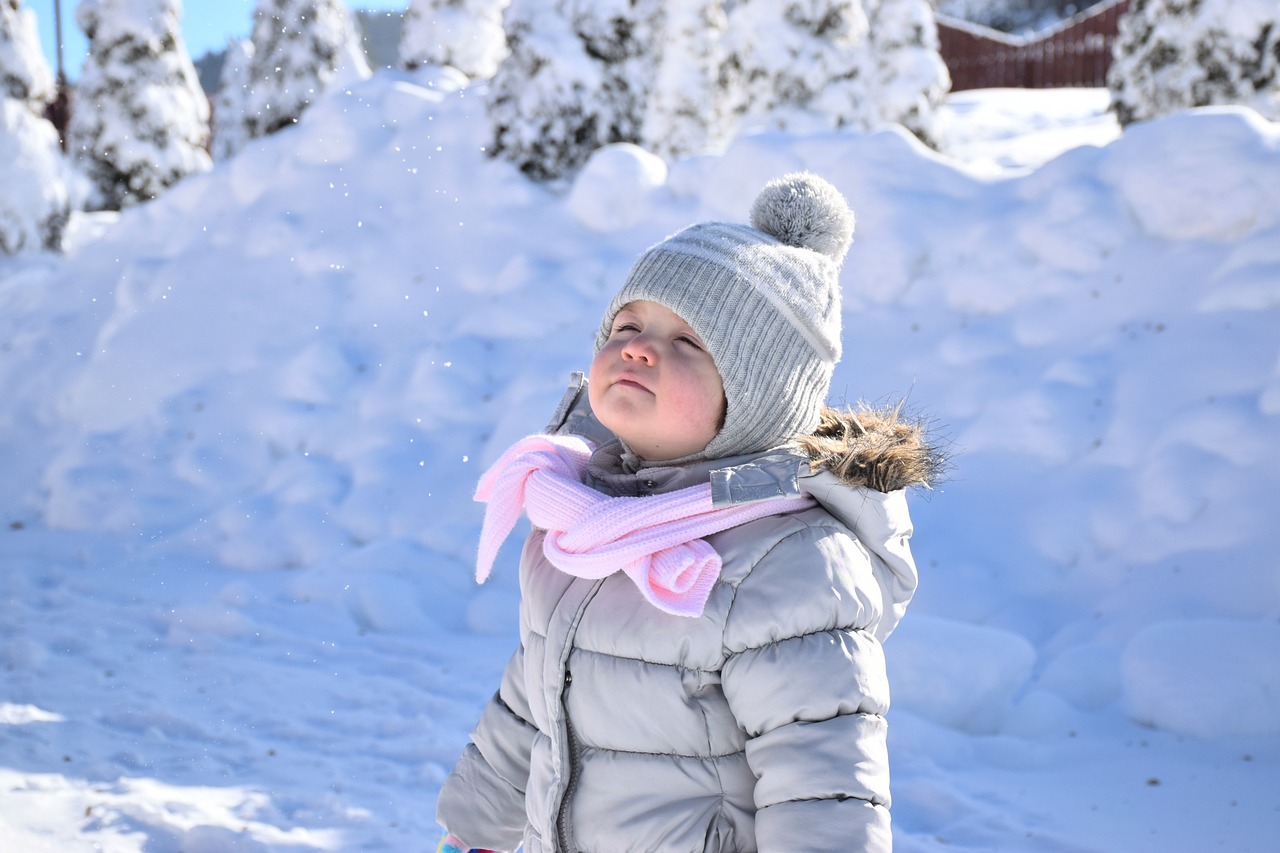
Written by: Tara Gray, M.A., CCC-SLP
Speech-Language Pathologist
Summer is the time for being out-and-about and there are so many places to be and explore with your child. But don’t forget about winter! Colder temperatures cannot stop us from finding lots of language-rich activities for you and your child to enjoy during this chilly season.
- Building a snowman – while this activity is highly weather-dependent, it is the perfect activity to work on language and have fun with your child during winter! It’s a great snow day activity to get kids moving and out of the house. Bonus, you can work on their expressive or receptive language. Choose a person to be the director of the snowman building who should plan and give directions. If the child gives directions to you, they will be working on their expressive language skills. If you give directions to the child, they will be working on their ability to understand. You can help them and simplify the activity or provide clues and help if/when they get stuck.
- Snow painting – another activity that depends on snow, but here in Michigan that’s a given at some point each winter. Again, a great snow day activity. Fill spray bottles with colored water (food coloring & water). Use the “paint” to paint the snow on your lawn. You can also create sculptures and use the “paint” to color your creation; as a child I made a pink flamingo out of snow with my mom! This is another activity that can be language rich as you talk about your plans for what you might make, how you will do that, etc. With younger children you can also model talking about what’s happening as you’re doing it (e.g., “I’m spraying this snow green. You’re spraying your snow blue.”).
- Going sledding – is it just me or are all the best winter activities outside in the snow? Sledding is fun for everyone and can actually be an amazing opportunity for modeling and practicing language with your child. You can work on your child requesting actions: get in the sled, get out of the sled, pick sled up, go to the top, put sled down, push me, go, stop, go fast, go slow, go with me, etc. A great way to start working on these requests is to model them at the appropriate time and your child will often begin to imitate them. There’s so much action and language happening during this classic wintertime activity.
- Making hot cocoa – this is one of those activities you can combine with any of the others on the list to have a truly magical winter day. As with any “cooking” this activity is a perfect one for working on following directions and learning the language of following directions. You can model things like: first we need to get a cup and a spoon, put them on the counter, next get the cocoa mix and the marshmallows, then heat up the water, last stir to mix it all up, etc. These ordinal direction words (first, then, next, last) can be difficult for kids to understand, so the more modeling they are exposed to, the better. Again, if your child is able to formulate directives like this you can have them provide the directions for making cocoa and see if their directions make a good cup or if they need some support for their directions to make sense.
- Take a walk/drive to look at holiday lights/decorations – an easy and calm activity that does not require any planning or materials. This is an activity you can use to model or work on descriptive language such as adjectives to describe the way the displays look or even prepositional phrases to describe how they are placed or to explain to others where exactly the items you’re looking at are. You can be modeling how these words/phrases can be used in longer sentences for your child. You can also ask them about what they see. They can work on formulating these types of sentences or even work on answering the questions you ask.
While during the winter, weather may be “frightful” at times, this season can still make for a great backdrop to work on your child’s speech and language skills.There are so many activities that are full of language. Also, please remember, this list is not exhaustive. Language-rich activities are those that we are talking to, with, and engaging with our child.
